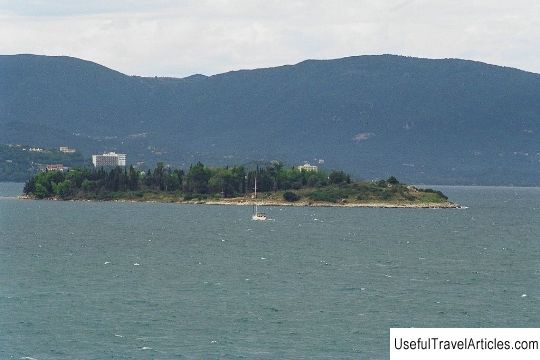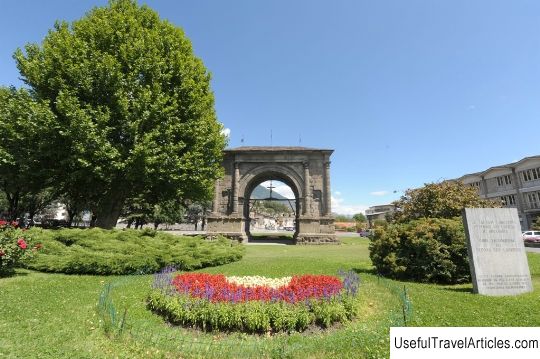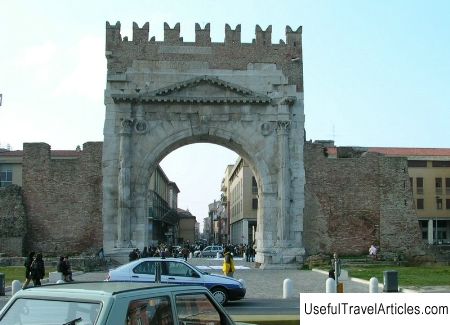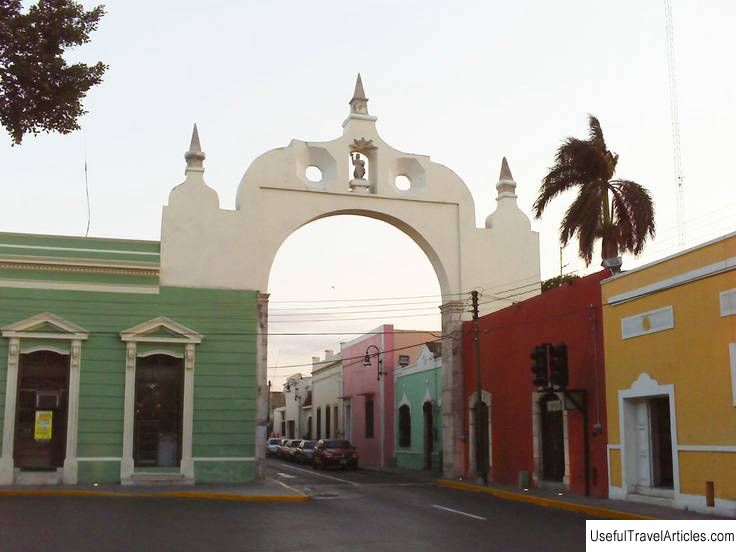Arch of the Etruscans (L'arco etrusco) description and photos - Italy: Perugia
Rating: 9,0/10 (6589 votes) 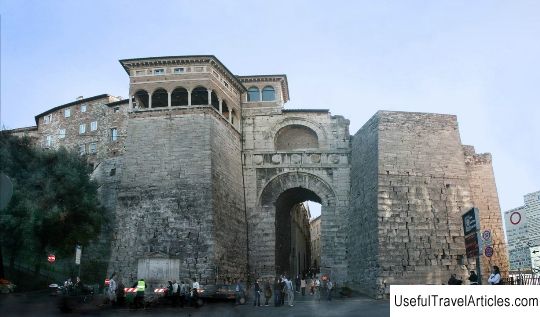
Arch of the Etruscans (L'arco etrusco) description and photos - Italy: Perugia. Detailed information about the attraction. Description, photographs and a map showing the nearest significant objects. The name in English is L'arco etrusco. Photo and DescriptionThe Etruscan Arch, also known as the Arch of Augustus, was built in Perugia around the 3rd century BC. and was one of the seven entrance gates to the city at that time. After passing through the arch and going down the street Ulysses Rocchi, you can find yourself on Corso Vannucci - the main thoroughfare of Perugia. Two centuries after construction, the inscription "Augusta Perusia" was engraved on the arch - it marked the conquest of the city by Emperor Augustus. Perugia surrendered after a seven-month siege in about 40 BC. This was a period of violent clashes between Octavian Augustus and Mark Antony. The latter's brother, Lucius, barricaded himself in Perugia - at that time the city was practically impregnable, as it stood on a hill and was surrounded by a powerful fortress wall with seven gates. Furthermore, according to historical chronicles, the army of Lucius outnumbered the enemy, and in the city itself there were enough supplies of food and weapons. August decided to personally lead a military campaign against the recalcitrant rebels. In the end, Perugia fell, and the emperor did not hesitate with reprisals - he plundered and burned the city, preserving only the temples of Vulcan and Juno. But in order to somehow smooth out the consequences of his actions, Augustus allowed the survivors to rebuild Perugia, but on the condition that the city would be called Augusta Perusia. This is how the corresponding inscriptions appeared on the Etruscan Arch and the gates of Porta Marcius. Over the centuries of its history, the Etruscan Arch has changed its name more than once - it was the Porta of Tertius and the Porta of Borka, the Arc de Triomphe and Porta Vecchia, as well as Porta Pulcra. Howbeit, this monumental gate is the best preserved in comparison with other city gates. The Etruscan Arch consists of two trapezoidal turrets and a facade. Above it is a small Renaissance lodge built in the 16th century, and on either side of it there are sandstone blocks with the remains of two heads. Once they symbolized the ancient deities who guarded the city. A fountain was built at the base of the right tower of the arch in the 17th century. Above the arch is a frieze decorated with metope with a round shield and another Latin inscription - "Colonia Vibia". It was made by order of Gaius Vibius Trebonian Gallus during his short reign from 251 to 253. The military leader Gallus, who ascended the throne as a result of the so-called "military anarchy" and announced the fall of the Western Roman Empire, was a descendant of a famous family, which had Etruscan roots and probably originated from Perugia. Just two years after accession, he was killed by his own soldiers, who joined the other commander Marcus Emilianus. In front of the Arch is the Baroque Palazzo Gallenga Stewart, which has been home to the University of Perugia for foreigners since 1927. The palace was built on the initiative of Giuseppe Antinori as the residence of the noble Perugian family Antinori. It was here in 1720 that young Carlo Goldoni staged his first performance. In 1875, the Palazzo was bought by Romeo Gallenga Stewart - hence the modern name of the building.      We also recommend reading Paiania description and photos - Greece: Attica Topic: Arch of the Etruscans (L'arco etrusco) description and photos - Italy: Perugia. |
